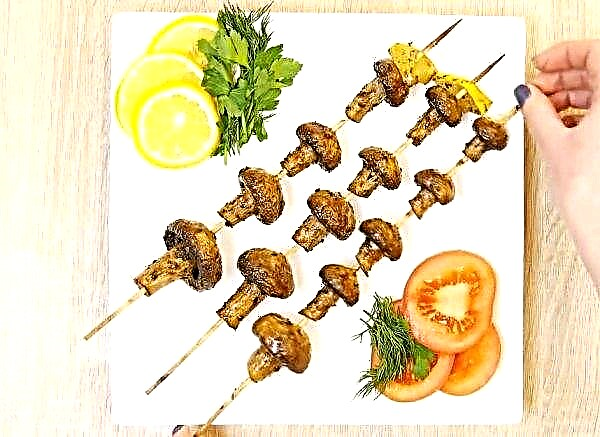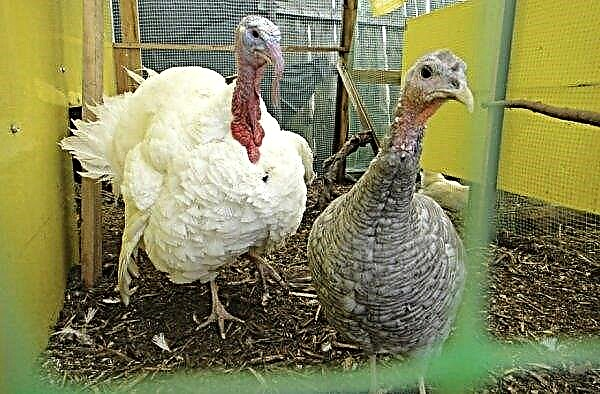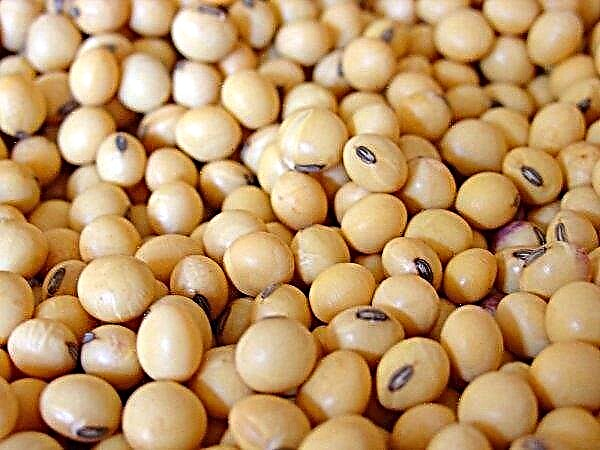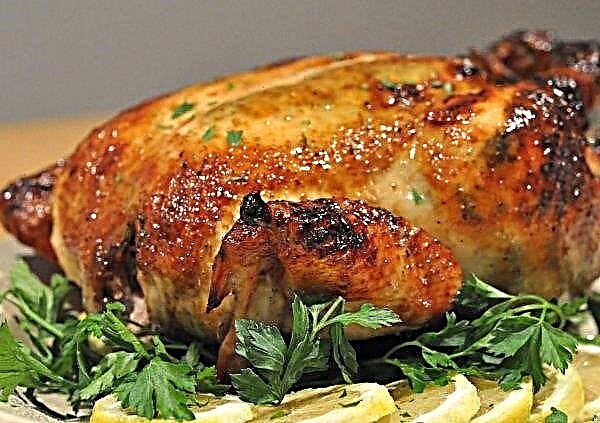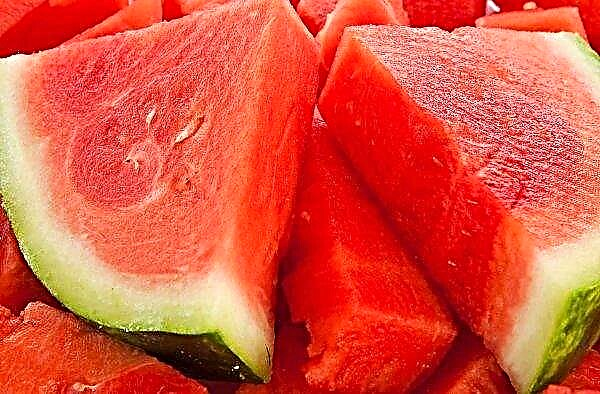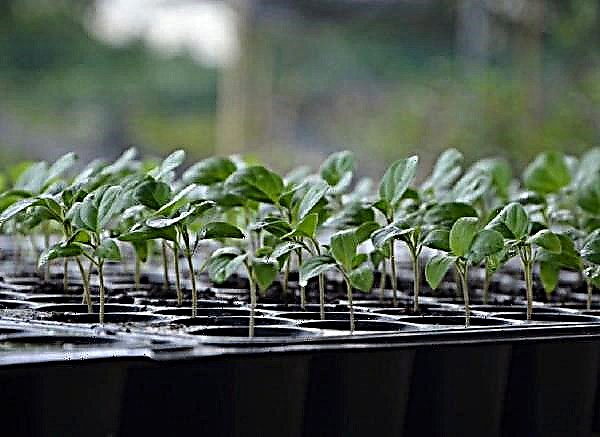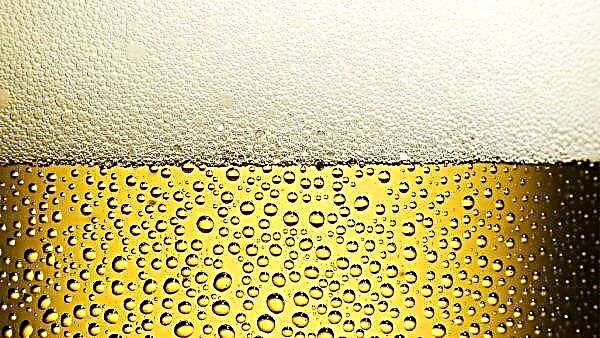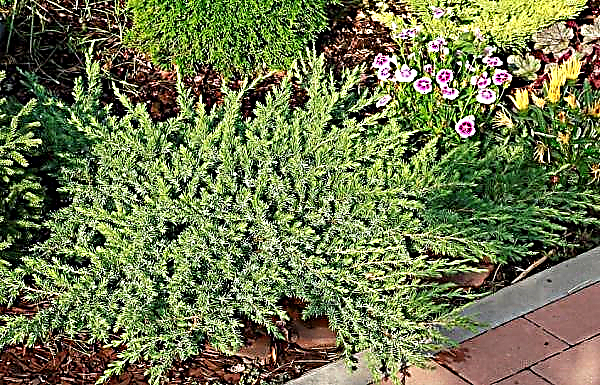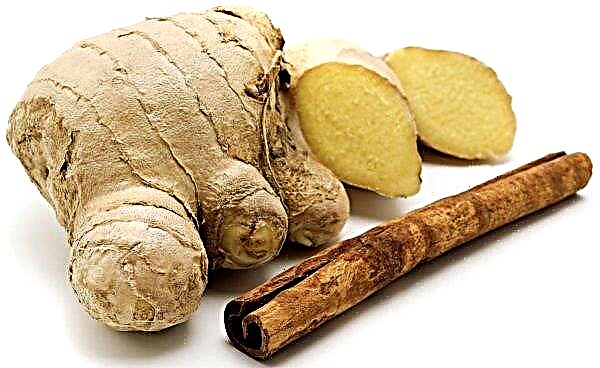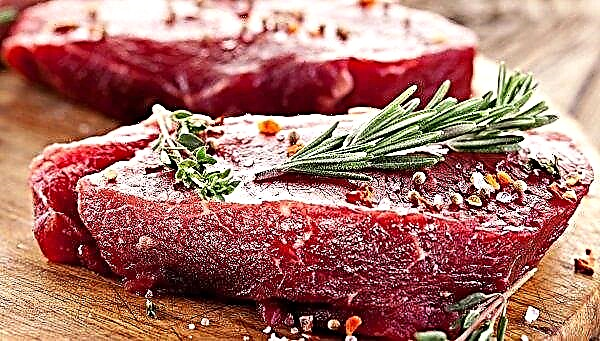The development of a chicken in an egg with its subsequent hatching is a process the details of which must be known to any farmer who wants to successfully reproduce a herd. The incubation period is divided into several stages depending on the stage of development of the chick. The incubation ends with the appearance of chickens, and this period is no less important than the incubation, as the cubs are very weak and need special care to survive.
Embryo developmental stages
Beginner farmers who want to breed their own chickens are primarily interested in how many days to expect offspring after laying eggs in an incubator or under a brood hen.
Before hatching, the embryo passes through 4 stages in its development, each of which is characterized by a change in the environment and heating depending on the changing needs of the emerging organism. The incubation period lasts approximately 21 days.
| The age of the embryo in days | Embryo development process |
| 1st stage (1–7th day) | |
| 1 | After laying the eggs, cell division processes immediately begin. The germinal disc is enlarged. The first blood vessels appear. |
| 2 | Blood vessels form a grid. The formation of the amnion begins - a protective membrane around the embryo containing liquid. Amnion performs a protective function, protecting the fetus from external damage. The rudiments of an allantois that perform respiratory function appear. The formation of the yolk sac starts. A heart and a heartbeat appear. |
| 3 | The development of the amnion continues - its folds are connected, and it closes, becoming integral. The primordium of the head appears. |
| 4 | The amnion is formed and filled with fluid. Alantois is a bag, it is pierced by blood vessels. The beginnings of the legs become visible, the eyes form, their pigmentation occurs. The growth of the embryo is already 8 mm. |
| 5 | Eyes are enlarged even more. The appearance of the beak is outlined. Legs are enlarged, wings appear. The neck is visible. A mouth is formed. Oxygen breathing begins. The length of the embryo is increased by 2 times - now its growth reaches 1.5 cm. |
| 6 | Vessels entwine around the entire yolk. The supraclavicular tubercle appears, the rudiments of the eyelids and fingers. Weight - 2 g, height - 2 cm. |
| 7 | New formations do not arise. Active development continues. |
| 2nd stage (8–14th day) | |
| 8 | The formation of fingers ends. Sexual signs appear. Already at this time you can distinguish the gender of the chicken. |
| 9–10 | The embryo increases, acquires resemblance to an adult. Beak, legs, wings, eyes are clearly visible. Feather papillae are placed on the head and back. |
| 11 | At the acute end of the egg, allantois closes. The body of the chick is already completely covered with papillae of feathers. There are claws and a comb. Height is 2.5 cm and weight is 3.5 g. |
| 12 | The comb takes on a jagged shape, fine fluff covers the back, and the eyelid reaches the pupil. The growth of the embryo is 3.5 cm. |
| 13 | Eyelids completely close their eyes. The fluff now covers not only the back, but also the hips with the head. |
| 14 | The chicken moves inside the egg. It sits at the top of its blunt end. Fluff covers the whole body. Growth - 4.5 cm. |
| 3rd stage (15–18th day) | |
| 15–16 | Now that the chick has completely consumed protein, its nutrition continues through the yolk. There were nostrils, completed the formation of claws. The growth of the embryo is 6 cm. |
| 17–18 | The paws are completely covered with scales. The yolk is retracted. Alantois blood vessels begin to degenerate and dry out. Now the growth of the chick is 7 cm, and the weight is 20 g. |
| 4th stage (19–21st day) | |
| 19 | The chicken is already as similar to an adult chicken. The blood vessels in allantois die off completely, as they are no longer needed. The chick begins to open his eyes. The remainder of the yolk is drawn into his body. The chicken is active, moves under the shell and squeaks. His height is 7.5 cm. |
| 20–21 | The chick is hatching and hatching. Height - 8 cm, weight - over 35 g. |
Subject to all the rules of incubation and the correct regulation of humidity and temperature, the cubs are born on the 20-21st day. A slight hatching delay is permissible - sometimes hatching occurs only on the 25th day after laying. A delay may occur if the heating temperature was not always what it should be for the incubation of chickens. If the differences were insignificant, most likely, everything will be all right with the chicks, they will just hatch a little later.
A slight hatching delay is permissible - sometimes hatching occurs only on the 25th day after laying. A delay may occur if the heating temperature was not always what it should be for the incubation of chickens. If the differences were insignificant, most likely, everything will be all right with the chicks, they will just hatch a little later.
However, if on the 25th day the chickens did not hatch, it means that the embryos died, the cause of which, as a rule, are too low temperature indicators.
Important! Hatching delay most often occurs when the eggs are kept in an incubator. When hatched by a brood, this usually does not happen, since the chicken sensitively controls the temperature in the nest, turns the eggs over, heats and cools them when necessary.
Signs of Upcoming Hatching
The first signs of approaching hatching appear around the 19th day of incubation.
They are manifested by the obvious activity of the chick under the shell:
- swaying of the egg due to the fact that the chicken moves inside;
- squeaking from under the shell is heard if you bring the egg to your ear;
- you can hear a soft tapping and rattle, which indicate that the cub began to gradually penetrate the hard shell.
Having found these signs, in the next 2-3 days we can expect the appearance of offspring.
The first sign of the hatching that began immediately is the hitching — the appearance of a small crack on the surface of the egg, which will soon become a small hole. After the occurrence of such a crack, one can soon expect the birth of a chicken. Pecking is always accompanied by a squeak.
Pecking is always accompanied by a squeak.
How Chicks Hatch
An important criterion for the survival of newborn chickens is how much time after hatching the chick is completely released from the shell.
Usually, the entire hatching period from the moment the first crack appears until it is completely released takes no more than 1 day. But if the cub after this period has not yet been born on its own, then improvement in the situation can no longer be expected.
Most often, from the moment of hatching (a hole in the shell that occurs at the crack site) and before birth, it takes about 1-3 hours. This is a fairly fast and active process. It takes much longer for the chick to break through the first crack and hole.
Hatching occurs as follows:
- In the last couple of days of the incubation period, the chicken becomes active, it bangs its beak on the shell from the inside, which is why the first small crack develops over time.
- The chick continues to peck a crack. A few hours after its appearance, a small hole is formed in which the beak is shown. Additional cracks diverge from the formed hole to the sides along the shell.
- The chicken continues to expand the hole, destroying more and more shells. He is active, scratches the paws of the egg from the inside, knocks with his beak, peeps, and the egg moves from the cub’s efforts.
- The chick destroys the shell in a circle at the level of its head. Cracks increase, and when the two parts of the shell begin to diverge, a wide gap appears between them, in which the body of the chick is visible.
- Soon after, the cub abruptly pushes both sides of the egg apart and literally falls out. The chicken is wet, the fluff on the body is wet and clumped, the eyes are immediately open, it breathes and squeaks.
 The hatching process in the incubator and under the brood is not much different, except perhaps by the degree of human involvement. So, if a brood is expected in an incubator, then a person should closely monitor what is happening, maintain the correct temperature and humidity, detect how long the chick is hatching in each egg.
The hatching process in the incubator and under the brood is not much different, except perhaps by the degree of human involvement. So, if a brood is expected in an incubator, then a person should closely monitor what is happening, maintain the correct temperature and humidity, detect how long the chick is hatching in each egg.This is important because, in rare cases, chicks may need help. In addition, by the time it is possible to understand whether the chicken is viable or not.
In the event that the mother hen lays eggs, human participation is minimal. Chicken mother's instincts work flawlessly. During the entire period of hatching, the mother herself turns the eggs over the required number of times, she cools and heats them.
The brood hen also monitors the birth of each chicken. She predefines nonviable individuals and rolls them out of the nest. She helps the rest if necessary, and after birth she dries, warms, teaches to nibble and drink.
Did you know? Chickens have emotions, these birds are prone to empathy. If the mother hen dies, the chick is sad. And if the chicken is hurt when the hen is buried, it will behave as if it were causing pain to it.
However, sometimes it happens that not all chicks that were viable during the entire incubation period are ultimately successfully selected from the egg. Sometimes the hatching process begins, the chick hatch, but it is not born, dying in the egg. In this situation, it is reasonable to think about why the chicks freeze before birth.
In this situation, it is reasonable to think about why the chicks freeze before birth.
This happens when the calf is either too weak or the shell is too strong and not thinned enough during the incubation period. In this case, the chicken simply does not have enough strength to break through a strong shell and be born. He can knock his beak from the inside for a day or more, but still not achieve success.
Completely exhausted, the chick dies without ever being born.
Do chicks need help?
Under the hen, the problem of cubs freezing during hatching is solved very simply. The chicken carefully watches the future brood and clearly defines those individuals who cannot cope with the shell themselves. Then she helps them by hitting her egg lightly with her beak 1 or 2 times. But when hatched in an incubator, a person should take care of this.
This does not mean that after hardening you need to start knocking on all the eggs. The chick must hatch on its own, otherwise untimely help can cause harm and lead to its death (this will be described below). But in situations with too strong shells a little help is necessary.
Important! The shell may be too strong due to a mistake made by the farmer - too low humidity in the incubator.
To help the baby get out of the egg is necessary in such cases:
- A crack and bite appeared, but the chick for 20 minutes can not expand the bore hole to a wide crack. In this situation, he does not have enough air under the shell, because oxygen is practically not supplied. The chicken will simply suffocate.
- After hatching, the hatching process stretches for 3 or more hours. This indicates that the egg shell is too strong, or the cub is too weak. Help recommended.
 Helping chickens when they are born is as follows:
Helping chickens when they are born is as follows:- If the chick is stuck at the hatching stage and cannot expand the hole, then you need to do it yourself. Break off small pieces of the shell (about 1 cm each) on each side of the bite hole. Make sure that you expand the shell around the beak of the chicken around his head.
- If the birth lasts for several hours, and the chick still cannot cope with the shell and expand the crack enough, then he needs help to do this. However, help is needed only when the two halves of the shell are already widely dispersed.
If the shell is separated too early, there is a risk of damage to the vessels of the chicken, which might not have come off the shells yet. Then the chick will die from blood loss.
It is for this reason that it is not recommended to intervene in the birth process ahead of time and without need. In most cases, each brood appears independently. And those who are not able to get out of the egg are eliminated as nonviable by natural selection.
Important! During hatched brooding, there are also certain risks when hatching. So, a chicken can leave the nest with unhacked chicks, leading the walk already appeared. To avoid this, newborn cubs are temporarily taken away from the brood, and after hatching the entire brood is returned to the mother.
Content of newly hatched chickens
Newborn chicks are weak and sensitive to environmental conditions. Making mistakes in organizing care after hatching can lead to the death of the brood. Therefore, it is important for the poultry farmer to know what needs to be done immediately after the appearance of the chicks and how to organize suitable conditions for their existence.
The necessary conditions
When breeding chickens in an incubator, after the appearance of the first individuals, the conditions in the device need to be slightly changed:
- Temperature - 35 ° C. Since at the last stage in the incubator the temperature indices were higher (37 ° С), they should be reduced by 2 ° С. This temperature must be maintained during all the first days of life, after which by the second day it is gradually reduced to 28–29 ° С, and then by the end of the first week of life it is still lowered to 22–25 ° С.
- Humidity during the incubation period for newborn chicks it is too high (before hatching it rose to 55%), and after the appearance of the first chickens it needs to be slightly reduced. To do this, simply remove the water containers from the device.
- Lighting newborn chicks need constant. On the 1st day, the lamp above them is kept turned on all the time, after which on the 2nd day they begin to turn off at night (from 9 pm to 6 am) - this regulation helps the chickens to form their own biorhythms.
If the chickens are hatched under a brood, then the hatched babies are taken away from the mother and placed in a cardboard box in which the necessary conditions are stored. And after the appearance of the entire brood, all the cubs are returned to the quack.
Arrangement of premises
If the chickens are hatched in an incubator, an important condition is how long they can be kept there. Staying in the device should not be too long. The chicks are there only until they dry out. It usually takes from 30 minutes to 2 hours.
Important! It is impossible to overheat chickens. If they stay away from the heat source, and the beaks lift up, open them and often breathe - it means they are hot and the temperature needs to be lowered.
After this time, newborns are transferred to a special box with conditions comfortable for them. You can take a cardboard box, or a small wooden box. The bottom is covered with a flap of cloth without lint or with newspapers, a 100 W heating lamp is placed above the box, the temperature is maintained at 35 ° C. To maintain heat, you can use heating pads or hot water bottles that are placed on the bottom of the box and covered with a cloth.
You can take a cardboard box, or a small wooden box. The bottom is covered with a flap of cloth without lint or with newspapers, a 100 W heating lamp is placed above the box, the temperature is maintained at 35 ° C. To maintain heat, you can use heating pads or hot water bottles that are placed on the bottom of the box and covered with a cloth.
In such a box, both chickens from the incubator and those that were hatched by the brood hen are placed.
In order for the conditions to be constant, the room with the new brood must also be kept warm, and the “children's” box should be covered with a cloth at night when the lamps are turned off to avoid cooling and the water in the heating pads should be replaced with hot water.
In the future, a brooder is built for the chicks - a special box in which the cubs will live until they reach the age of one month. It is made of any material - cardboard, plywood, wood. The box is covered with a mesh “breathing” lid, which is easy to lift.
The size should be such that 30 chicks account for about 1.5–2 square meters. m. of space. Inside the brooder, heating and lighting devices are installed.
If the brood was hatched by a brood hen, then instead of a brooder they are transplanted into a larger insulated aviary.
The brood in the first month is usually kept separately from the rest of the herd. It is usually difficult to install a brooder in a chicken coop, as chickens need a lot of heat, and adult chickens in such conditions will not feel very well.
Therefore, a brooder with a brood must be installed in a separate room where it is easy to maintain the necessary conditions and control the temperature regime. After a month, the chicks are introduced into the general herd and transferred to the chicken coop.
Features of feeding and drinking
Chickens begin to eat immediately after they dry out and begin to make their first attempts to rise to their legs. Therefore, they must immediately be provided with food.
On the 1st day of life, the chicks are given very ground and nutritious food:
- hard-boiled yolk;
- semolina;
- crushed groats - millet or barley.
Semolina and yolk should be well chopped and mixed thoroughly. Cereals give separately - one type of cereal for each individual meal. This is necessary so that the cubs do not peck out only what they like, but receive all the vitamins and minerals.
Water is also given immediately. It should be warm and boiled. For the prevention of gastrointestinal diseases, instead of water, chickens can be offered a decoction of yarrow or add a little potassium permanganate to drinking water for disinfection.
From the 2nd day of life, the following are introduced into the diet of chicks:
- chopped shells;
- kefir with water in a ratio of 50/50;
- milk;
- skim cheese;
- cereals;
- wheat
- barley groats;
- corn grits;
- carrot;
- fresh greens;
- starter feeds for mother hens and newborn chickens.
 This diet is relevant for chicks until the 10th day of life. At this time, it is important to provide the offspring with all the necessary vitamins and minerals, which will give a good start for the growth and formation of a new organism. Therefore, nutrition should be of high quality, fresh, rich, varied.
This diet is relevant for chicks until the 10th day of life. At this time, it is important to provide the offspring with all the necessary vitamins and minerals, which will give a good start for the growth and formation of a new organism. Therefore, nutrition should be of high quality, fresh, rich, varied.Usually chicks begin to peck and drink on the first day after birth. Under the hen, this happens guaranteed, because the mother teaches the cubs how to do it. But in the incubator, the situation is a little different.
Important! During the first day, the feeding regimen should be frequent - about 5–6 times a day every 2-3 hours. Servings should be made small and leftover food — remove.
At first, some individuals may not immediately understand how to nibble and drink. But eating it is vitally necessary from the very first hours. Therefore, the farmer needs to help newborns - carefully pour the feed into its beak and drink from a pipette.
Possible Chick Diseases
In the first weeks of life, nestling diseases are often associated with deficiencies.
Such diseases include the following:
- Overheat. Due to the lack of thermoregulation, the cubs still cannot cool themselves, they weaken, become sluggish, inactive. In this case, you need to adjust the temperature and give the chicks warm water. Often overheating occurs due to a lack of drinking. Therefore, a drinker with water should always be full.
- Indigestion. It happens due to poor-quality feed, dirty water, unsanitary conditions in the brooder. Chicks need to be given only high-quality food, boiled water, and also regularly remove litter and leftover uneaten food.
- Muscle atrophy. It occurs when there are no solid, grinding elements in the brood ration - shell, shell, pebbles. In this case, the feed is not digested and leaves undigested. Therefore, crushed shells and shells must be introduced into the diet from the 2nd day of life.
- Poisoning. Access of chicks to various chemicals, poisons can lead not only to illness, but also to death. They can be poisoned even with a large amount of table salt. To avoid this, you need to restrict cubs' access to any unsafe products.
- Cannibalism. Sometimes chicks begin to peck and hurt each other. This condition is caused by increased aggression, which occurs most often due to stress. The most common stress factor is too bright and prolonged lighting. Therefore, it is necessary to control the brightness of the lamp and the duration of daylight hours.
- Rickets. It arises from a lack of vitamin D and too tight a content. Chickens begin to fall to their feet. To avoid this, one must take into account the size of the livestock and the space where it is kept, as well as provide the chicks with all the nutrients. Vitamin D can be given for prophylaxis in the form of an oil solution.
 In addition to these non-communicable diseases, the brood can become infected with bacteria or viruses and become infected with infectious diseases (typhoid, paratyphoid, salmonellosis). Such serious diseases result in the loss of more than 50% of the total population.
In addition to these non-communicable diseases, the brood can become infected with bacteria or viruses and become infected with infectious diseases (typhoid, paratyphoid, salmonellosis). Such serious diseases result in the loss of more than 50% of the total population.Prevention of infectious diseases is as follows:
- maintaining cleanliness in the room and brooder;
- clean, high-quality, fresh food;
- fresh boiled water with potassium permanganate;
- yarrow broth as a drink.
If the first signs of a bacterial infection are observed in the chicks (whether it is diarrhea or mucus from the beak), they need to be given an antibiotic. The drug Enroflon has proven itself well, which can be given from the first days of life, not only for treatment, but also for prevention.
Did you know? Chickens are picky about the choice of roosters, they choose to fertilize the largest and most powerful representatives. Mating with several males, the chicken is able to eject sperm from unsuitable individuals, leaving only the seed that it considers most suitable for breeding.
What eggs do chickens hatch from?
Beginner farmers are wondering if chickens can hatch from all eggs. This is not so, because the egg must first be fertilized, and for this there must be at least one rooster in the chicken coop. The greatest probability of hatching from eggs that meet the following criteria:
The greatest probability of hatching from eggs that meet the following criteria:
- Freshness. Eggs should be as fresh as possible. It is advisable to store them no more than 7 days. After that, they age, and the chance of successful hatching is significantly reduced.
- Storage temperature and humidity. The viability of the embryo is preserved only if the eggs are stored in a cold place at a temperature of 10 to 18 ° C and at a humidity of not more than 80%.
- No defects. The shell should be smooth, without dents, cracks, roughness, color splashes.
- The average size. Too small eggs will make small, weak and unviable chickens. Too large eggs are also not recommended. It is better to stay at an average size. Moreover, all eggs should be approximately the same.
- No internal damage. When viewed on an ovoscope, an air chamber and moderately movable yolk should be visible. If the yolk is too mobile and dangles inside, or if it is completely motionless, as if stuck to the shell from the inside, then such eggs will not produce offspring.
If the eggs meet the specified requirements, are properly stored and incubated, then from them you can get almost 100% yield of chicks.
Also, for farmers, the issue of determining the sex of newborn offspring is relevant.
However, it is difficult to determine the sex of the daily livestock, because gender characteristics have not yet been formed. Nevertheless, there are methods by which with a probability of 65–85% you can predict who is in front of you - a chicken or a cockerel.
- Determination by weight. Males by nature are slightly larger and heavier than hens. Therefore, if each individual brood (within the same breed) is weighed on very accurate weights, you can see that some chickens are 2-3 g heavier than others. This will be the cockerels.
- The width of the legs. The method is best suited for meat breeds. It consists in the fact that when examined, the males show stronger legs than the hens, and besides, they are wider.
- According to the color of the feathers. The method is suitable only for those breeds in which the color of females and males is different.
- On the wings. This method is relevant only in the first 2-3 lives. Roosters have lighter wings than hens. Also, in females, the feathers on the wings grow faster than in males, therefore, on the 3rd day, 5-6 feathers are already formed on the wings of the hens.
- DNA method. An expensive method that is not used in private households. It gives a 100% guarantee of determination and is used in breeding farms.
- Japanese method. An unsafe method for chicks, which is better not to apply, however, the probability of a correct determination is quite high - up to 95%. It consists in turning the cloaca of the chick out and inspecting for the presence of a tubercle. If there is a tubercle, a rooster; if not, a chicken. It can only be carried out by a specialist.
Did you know? Of the eggs purchased in the store, chickens cannot appear. Manufacturers of egg products do not attract roosters to production, so the eggs of all laying hens are unfertilized.
The high survival rate of chickens after hatching largely depends on the conditions of care, which are important from the very beginning, - on the selection of eggs, the subsequent incubation period, the content during hatching, and until the first weeks of life after birth.
Chicks are demanding of the conditions of detention and begin to hurt when the regime is violated. However, with proper care, a young brood will become a strong and healthy livestock.

